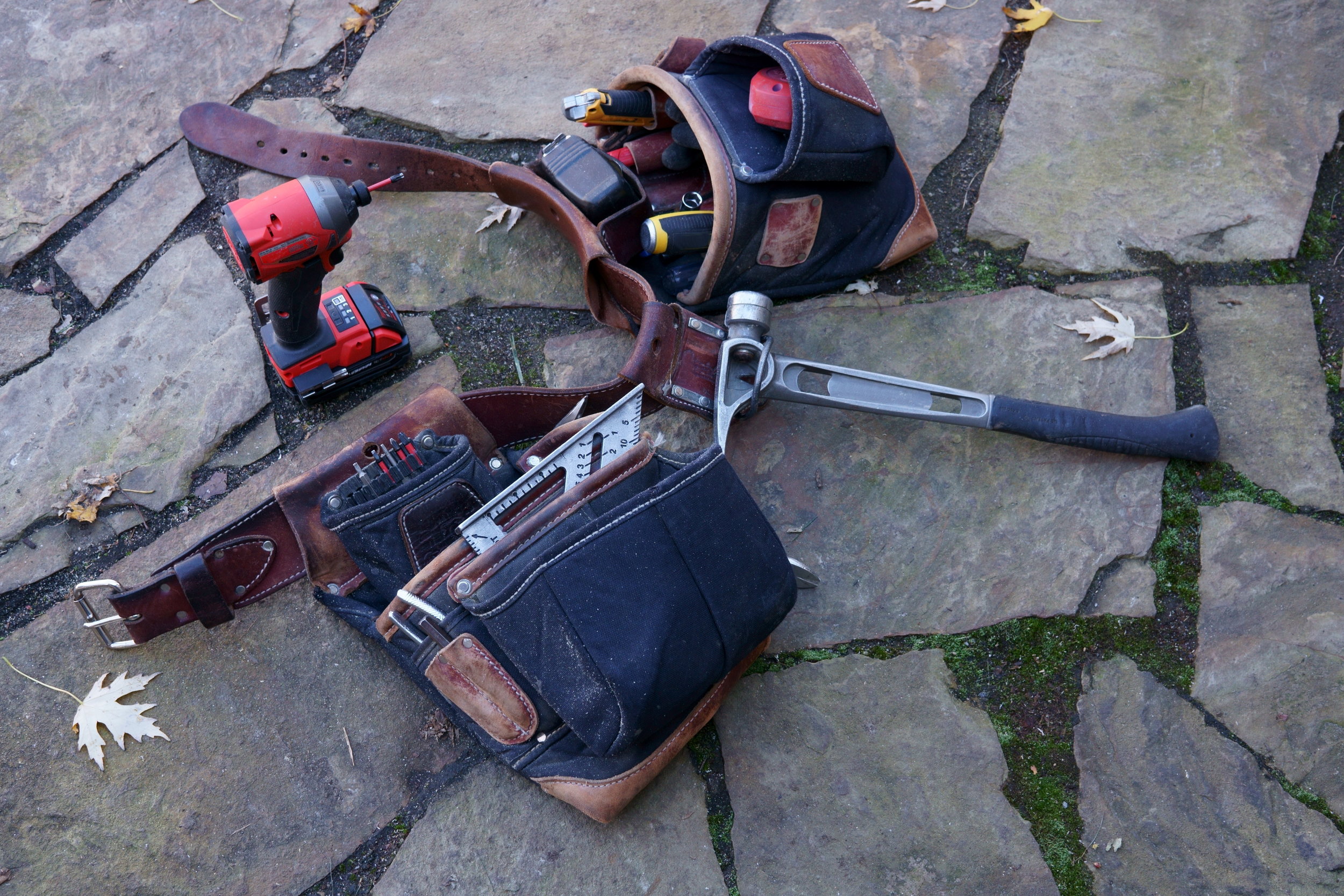The right toolbelt holster can make your job easier and more efficient. But the wrong tool holster can result in dropped or damaged tools, wasted time, and even injury. To take the mystery out of which kind of toolbelt holster is right for you, we’ve compiled this list of the different types of holsters and their pros and cons.
Getting Organized with a Toolbelt Holster
When you’re in the middle of a project and can’t find the tool you need, it can result in delays and headaches. A good toolbelt can help solve some of these frustrations. A toolbelt allows you to carry your tools with you, ensuring you always have the right tool on hand.
RELATED: KEEP YOURSELF ORGANIZED WITH THE PROPER TOOLBELT HOLSTER
But not all toolbelts work for every purpose. This is where a toolbelt holster comes in handy. Some larger tools like drills and hammers don’t always fit well in a standard toolbelt. But with the right toolbelt accessories, you can customize your set-up to suit your needs.
There are a number of different styles of toolbelt holsters on the market. It may seem like any one will do the job, but they don’t all perform the same. Here’s what you need to know about the different kinds of drill holsters to help you make the right decision.
J-hook
A conventional J-hook holster slides over a belt and uses a hook with a clip to hold a drill or other power tool. A J-hook offers convenient, one-handed operation and is designed for either left- or right-hand use. But because it hooks over the belt, you find some j-hook holsters are not as secure as other drill holsters.
One of the other drawbacks of conventional hook-style tool holders is that the hook can catch on things if you are moving around without a tool. Tools can also fall out of some hook-style holders when there is nothing securing the tool in place.
Bungee Tool Holder
A bungee tool hook features a bungee-cord strap that connects to the base of the hook, forming a loop to hold tools on your belt. This style of tool hook also features an over-the-belt hook to attach it to a belt. While the bungee cord will hold your drill in place, it requires two hands to operate and can accidentally release if the tool bumps against something.
RELATED: KEY DIFFERENCES BETWEEN A BUNGEE TOOL HOOK AND THE GORILLA HOOK
Pouch Holsters
There are a number of different pouch-style toolbelt holsters. They come in a variety of different materials including leather, polyester, and canvas. Pouch holsters usually attach to the belt with a Velcro strap or snap, so they may be considered more secure than bungee or conventional J-hook toolbelt holsters. Unfortunately, toolbelt pouches require two hands to operate, and tools can still fall out if they’re not well-balanced.
The Gorilla Hook
The Gorilla Hook features a secure belt loop system that slides over your belt and won’t fall off unless you remove the belt. This means that whatever you do over the course of your workday, your drill will remain securely by your side. Whether you’re climbing scaffolding to crawling into hard-to-reach spaces, the Gorilla Hook will keep your drill where you need it.
The Gorilla Hook’s easy-release clasp means you have one-handed access to your drill at all times. A quick flick of the thumb is all it takes to remove the drill from the hook. And since the latch is self-closing, you just have to drop the drill in the hook and it is securely in place.


